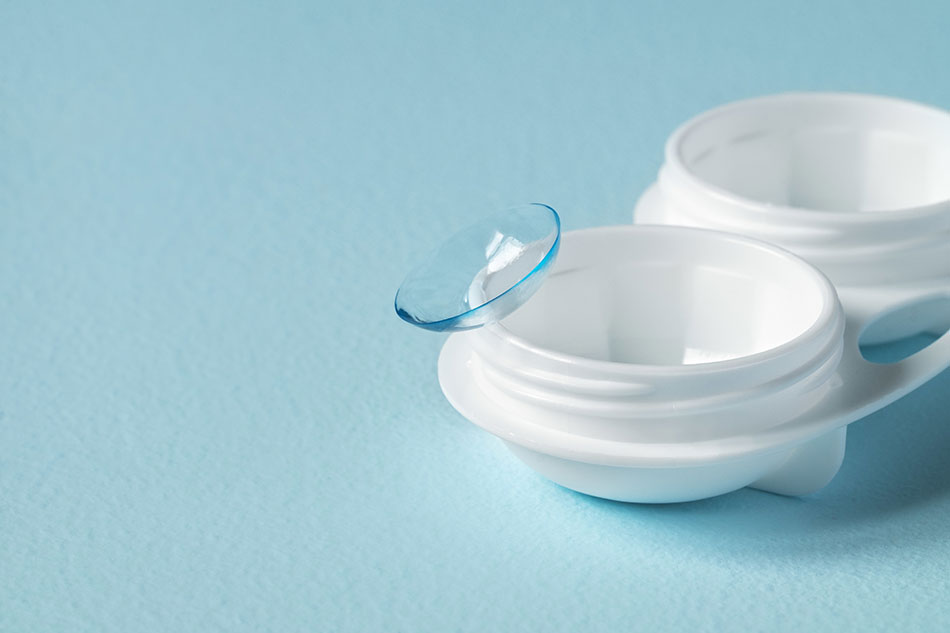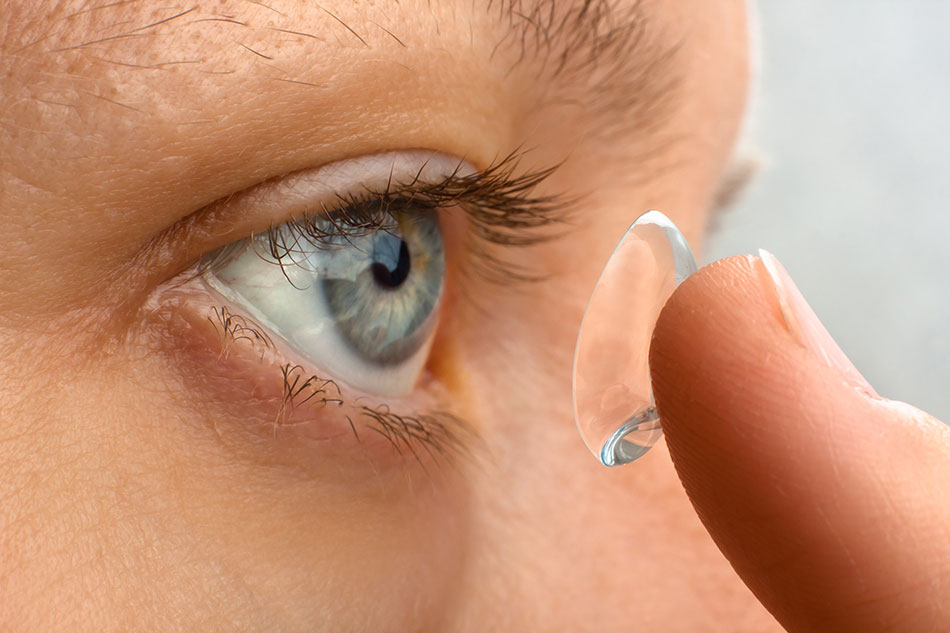What You Need to Know About Astigmatism and Contacts

One-third of Americans have some form of astigmatism. This is a condition that makes the eye's cornea oval instead of round. This irregular curvature makes vision blurry as a result.
Fortunately, you can improve the condition with corrective eyewear, including contact lenses. In fact, you can correct nearsightedness or farsightedness as a result of mixed astigmatism. If you have this eye condition, here's what you need to know about astigmatism and contacts.
What Is Astigmatism?
Astigmatism is when the eye's cornea looks like a football instead of the usual sphere. This causes light to reflect differently in front of or behind the cornea. Everything looks blurry as a result.
Doctors don't know for certain what causes astigmatism, but it is believed that genetics is a factor.
How Is Astigmatism Diagnosed?

An eye doctor can detect astigmatism through a regular eye exam. He or she will use instruments to shine bright lights into your eyes and check your vision strength. Your doctor will also use a tool called a keratometer to determine the curvature of your corneas.
The Three Types of Astigmatism
- Myopic astigmatism: Nearsighted vision, meaning objects close up are in focus. Light focuses in front of the retina.
- Hyperopia astigmatism: Farsighted vision, meaning objects far away are in focus. Light focuses behind the retina.
- Mixed astigmatism: Objects both near and far appear blurry. In medical terms, there is both a farsighted meridian and a nearsighted meridian.
Astigmatism Symptoms
Besides fuzzy vision, people with astigmatism may experience chronic headaches. These headaches are caused by squinting and continuously trying to focus the eye.
There is no cure for astigmatism, besides LASIK surgery. Astigmatism can sometimes get worse worse, but this is often simply due to ageing. This is similar to how some people require reading glasses as they grow older.
Astigmatism and Contacts

There are three types of contact lenses that can help people with astigmatism:
- Toric
- Rigid Gas Permeable
- Hybrid
Toric Contact Lenses
Toric contact lenses are soft lenses developed just for people with astigmatism. They look similar to regular soft contacts but have different powers at different meridians. The design enables them to rotate to the correct orientation for your specific eyes.
Toric soft lenses are very permeable and are made of hydrogel or silicone hydrogel. They allow oxygen to easily pass through them and lets your eyes breathe. This quality makes them fairly comfortable to wear, even for several hours.
These lenses may require a few visits to the eye doctor to find the right strength and fit. They also tend to be a little expensive. Replacements cost more than regular soft contact lenses.
Rigid Gas Permeable Contact Lenses
Rigid gas permeable lenses are also called RGP or GP lenses. They contain some silicone, which makes them more flexible than hard lenses. They also let oxygen pass through, enabling the eyes to breathe.
These lenses are not as flexible as traditional soft contact lenses. However, they are much more advanced than the hard contact lenses used in the 1970s made of PMMA plastic. RGP lenses tend to be more durable than soft contact lenses. This may make them more affordable in the long run.
If your case of astigmatism isn’t too bad, RGPs are usually the first choice for treatment. Eye doctors normally reserve the pricier toric lenses for more severe cases.
Many people find they have better acuity with RGP lenses than with soft toric ones. However, some find them more uncomfortable to wear. Additional custom fittings may resolve this issue.
A Third Choice: Hybrid Lenses
Hybrid lenses combine the best of both worlds. The inner or central area is made of the same material found in RGP lenses. The outer area is made of a soft lens, which can be either hydrogel or silicone hydrogel.
This means they provide the sharp vision of RGP lenses while maintaining the comfort level of soft contact lenses.
Specialty Toric Contact Lenses

Not long ago, people with astigmatism had very limited choices for contact lenses. Today, there's a variety of options, ranging from different wearable time frames to colors.
You can now wear disposable toric contact lenses for a day, a week or even a month before replacing them. A special new lens made of silicone hydrogel lets you wear them continuously for up to 30 days.
If you want to enhance or change the color of your eyes, you can easily do so. Many contact brands now make their colored contacts to accommodate astigmatism too.
Other Solutions
Orthokeratology Therapy
In some cases, a doctor may suggest orthokeratology (ortho-k) therapy. This is when you wear specially fitted RGP lenses overnight. The lenses actually reshape the cornea so that it is less football-shaped during the day. This allows you to see without corrective eyewear.
A downside to this treatment is the effects only last a day or two. As they start wearing off, you'll need to wear the RGP lens overnight again to reshape the cornea. But for many people, the hassle of putting lenses in before sleeping is worth it. They get to go lens-free during the day.
This therapy works best for people with mild to moderate astigmatism. It can cost more since you may need ongoing visits and care. The lenses need to be fitted and checked by an eye care professional.
LASIK Surgery

For a more permanent solution, LASIK surgery can be used to treat astigmatism. During the surgery, precise lasers reshape the cornea to eliminate the need for corrective lenses.
One thing to keep in mind with LASIK is that it's much more expensive than buying contact lenses. Additionally, people with certain conditions, such as autoimmune disorders, may not get the all-clear for LASIK.
Keep Your Eyes Healthy
Now that you know about astigmatism and contacts, it’s time to make an appointment with your eye doctor. In the meantime, learn how you can reduce eye strain so you can keep your eyes happy and healthy!